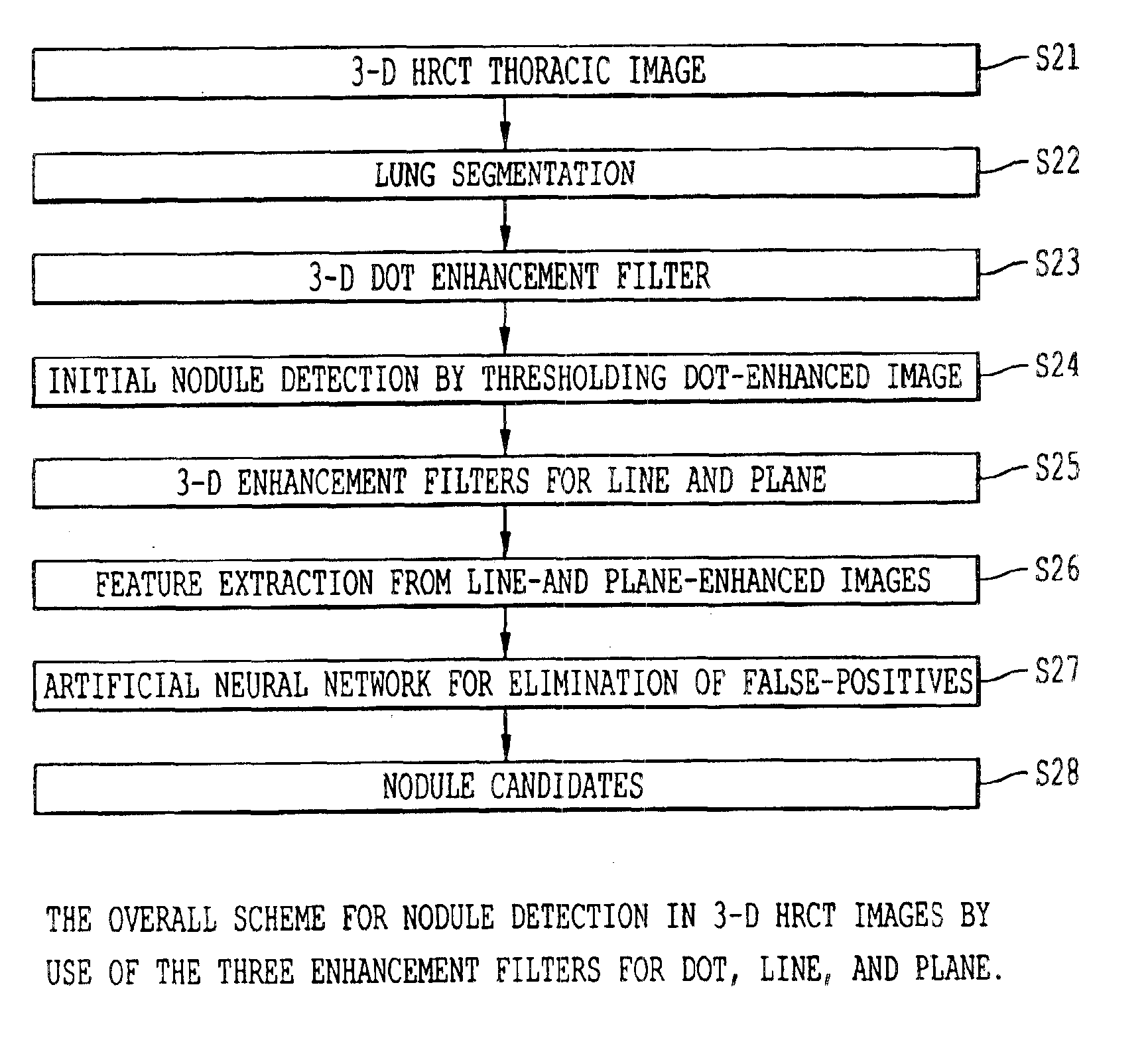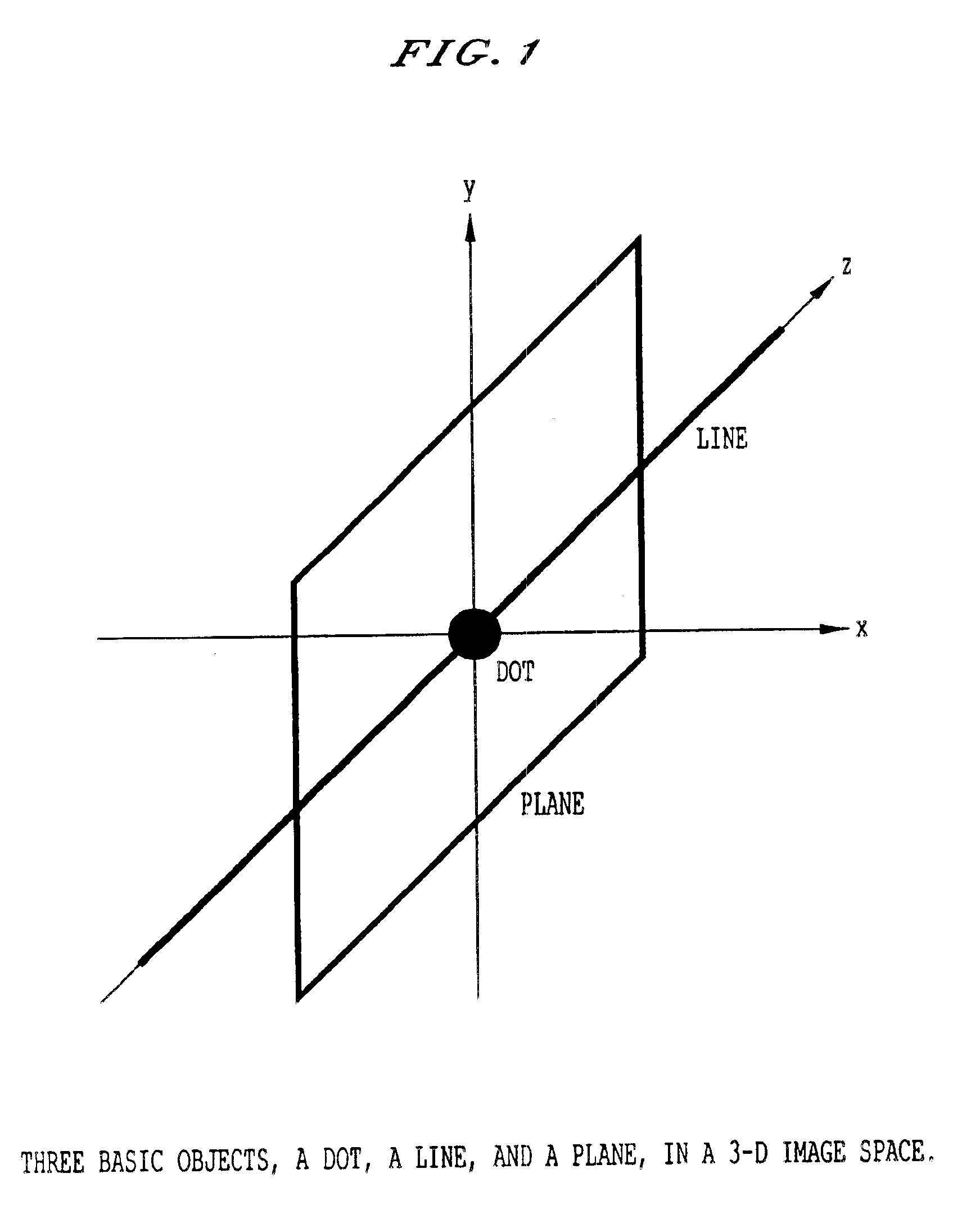Method, system, and computer program product for computer-aided detection of nodules with three dimensional shape enhancement filters
a technology of computer-aided detection and nodules, applied in image enhancement, instrumentation, program control, etc., can solve the problems of missed cancer identification/detection, large volume of data for radiologists to read, and high cost, and achieve good specificity and good sensitivity
- Summary
- Abstract
- Description
- Claims
- Application Information
AI Technical Summary
Benefits of technology
Problems solved by technology
Method used
Image
Examples
Embodiment Construction
[0054]The construction of three enhancement filters of the present invention is based on three kinds of idealized basic shapes, i.e., dot, line, and plane, in three-dimensional (3-D) image space. These shapes are the simplified representations of nodules, blood vessels, and airway walls in thoracic CT images. Requirements for each of the enhancement filters are that a large response is produced for one specific basic shape, and a small output is provided for the other two basic shapes. Therefore, each of these filters has a good sensitivity and a good specificity for one of the three basic shapes. The filters are based on the eigenvalue analysis of the Hessian matrix at each location in 3-D image space, which originated in Koller (reference 19) and was further developed in Lorenz and Franzi (references 20 and 21, respectively) for the purpose of vessel enhancement. The vessel enhancement filters employed in these references are likely to produce a large response for a sphere, which ...
PUM
 Login to View More
Login to View More Abstract
Description
Claims
Application Information
 Login to View More
Login to View More - R&D
- Intellectual Property
- Life Sciences
- Materials
- Tech Scout
- Unparalleled Data Quality
- Higher Quality Content
- 60% Fewer Hallucinations
Browse by: Latest US Patents, China's latest patents, Technical Efficacy Thesaurus, Application Domain, Technology Topic, Popular Technical Reports.
© 2025 PatSnap. All rights reserved.Legal|Privacy policy|Modern Slavery Act Transparency Statement|Sitemap|About US| Contact US: help@patsnap.com



